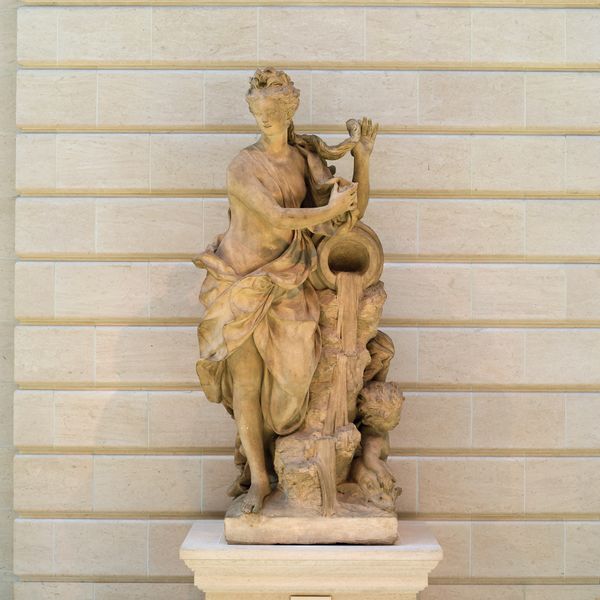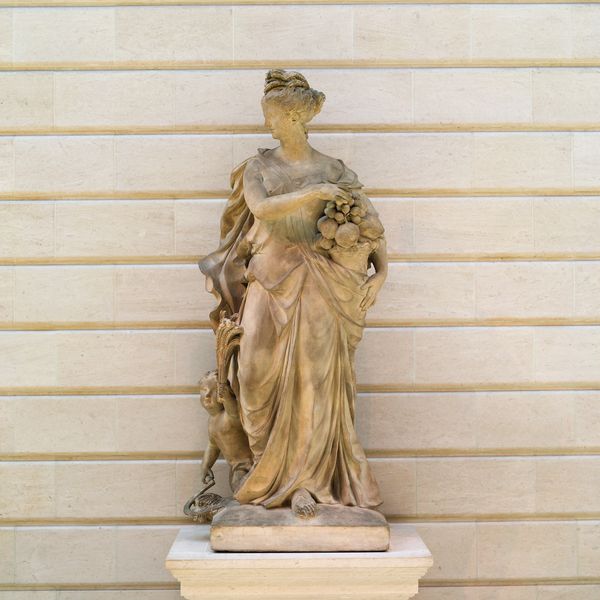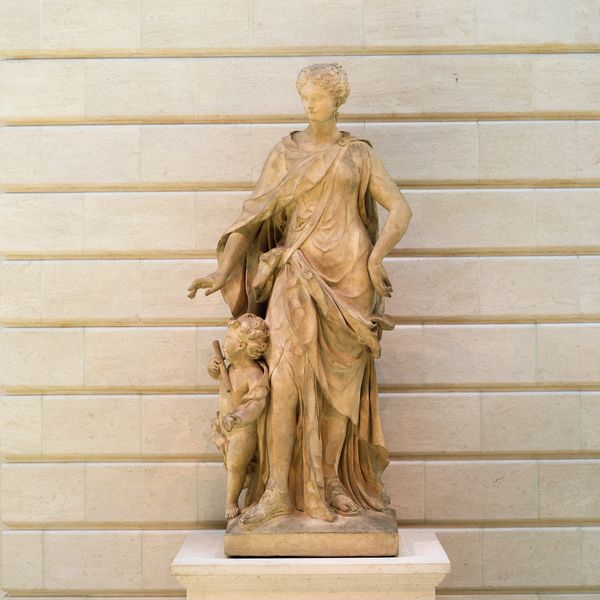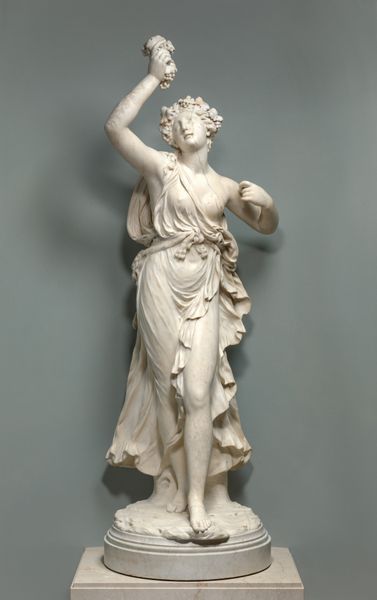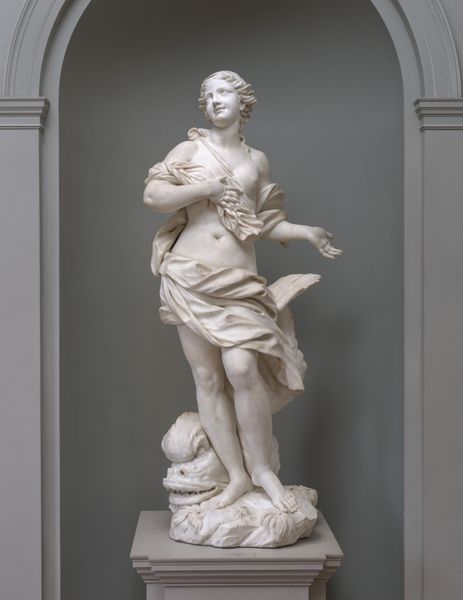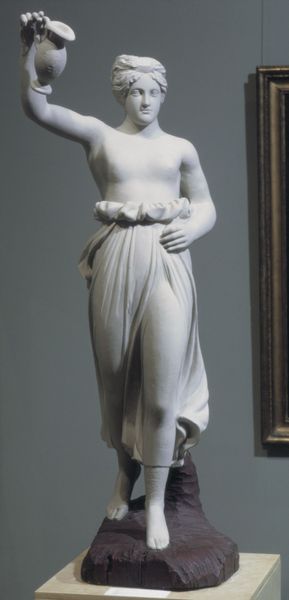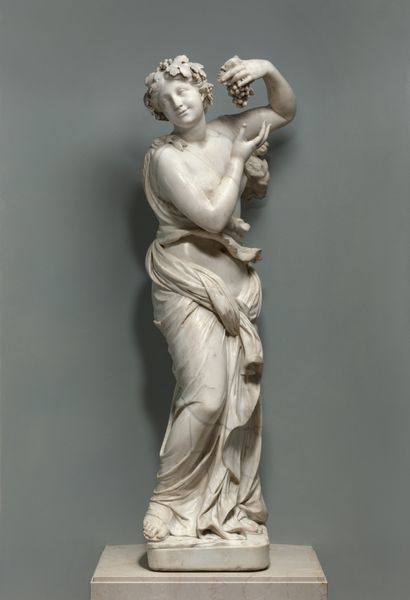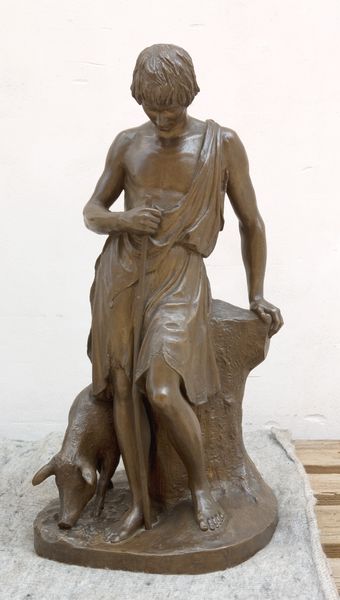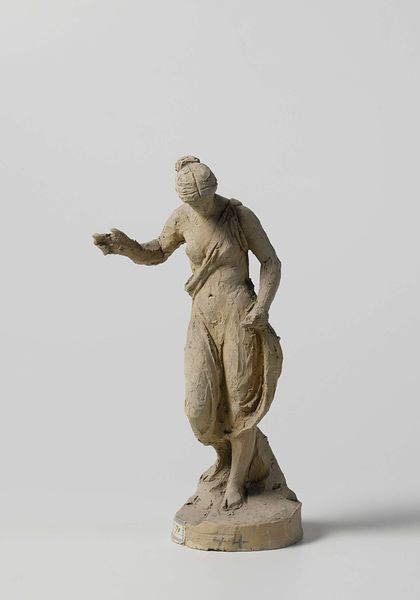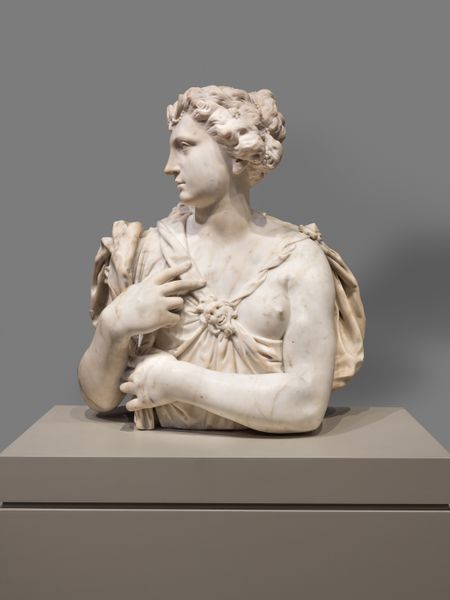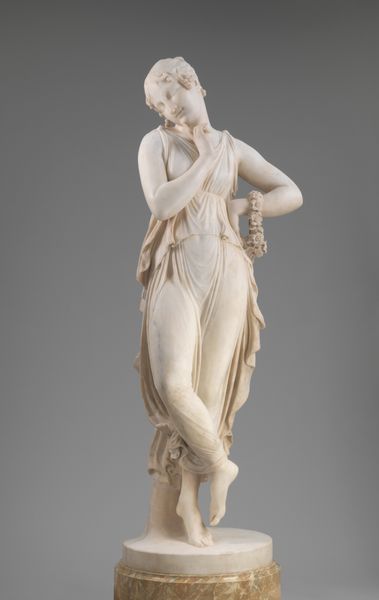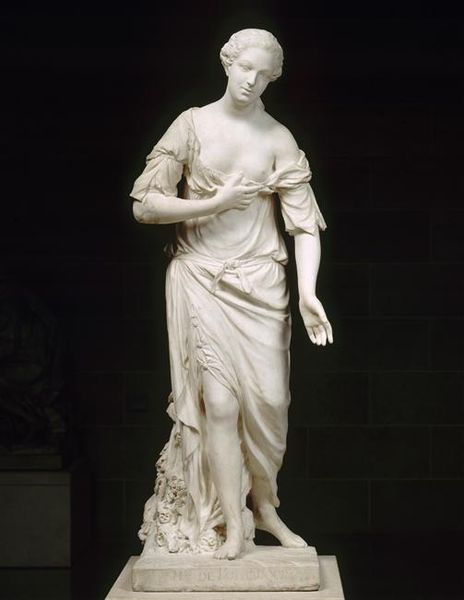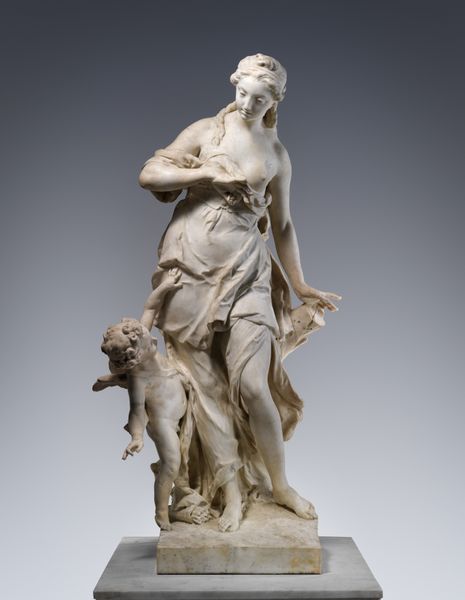
sculpture
#
baroque
#
sculpture
#
classical-realism
#
figuration
#
sculpture
#
decorative-art
Dimensions: Height: 7 ft. 3 3/4 in. (223 cm)
Copyright: Public Domain
Editor: Here we have "Fire," a terracotta sculpture crafted between 1745 and 1765 by Jean-Pierre Defrance. Currently residing at the Metropolitan Museum of Art, it has this dramatic almost theatrical quality to it. What interpretations can we draw from this piece? Curator: This sculpture immediately brings to mind the prevalent societal structures of 18th-century France, doesn’t it? Notice the almost subservient position of the child figure. Considering Defrance's position within the French Academy, how does this sculpture reinforce or perhaps subtly critique notions of power and hierarchy that permeated French society? How might contemporary feminist theory interpret the representation of the female figure in relation to the "Fire" theme? Editor: That's a fascinating point. I hadn't considered the power dynamics at play. Do you think the artist was consciously aware of reinforcing those social norms, or was it simply a product of the time? Curator: It's a delicate balance, isn’t it? Artists often work within, and sometimes against, the prevailing ideologies. The question becomes: does the artistic expression challenge, subvert, or normalize these norms? And how do these power dynamics influence access to resources? What does it mean for an artwork from this period to now reside within the Met, what global conversations are therefore made possible, and which get stifled? Editor: So, viewing "Fire" through a contemporary lens invites us to analyze not just the artwork itself, but also the complex social and historical context that shaped its creation, circulation and current state, to better understand what it reveals about historical power structures. Thank you. Curator: Absolutely, and how these echoes continue to shape our present. It challenges us to engage in critical dialogues about the representation of power and gender, even in seemingly innocuous works of decorative art.
Comments
No comments
Be the first to comment and join the conversation on the ultimate creative platform.
